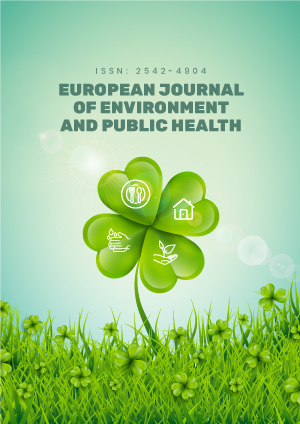Abstract
Addis Ketema is one of the ten sub-cities of Addis Ababa, where the biggest market and the biggest bus station in Ethiopia are located. The liquid waste that is generated from this sub-city is not being handled properly. The objective of this study is to assess the liquid waste handling practice of Addis Ketema and its impact on Shankela River. The data is collected by observation, interviewing garage employees, and interviewing residents. In addition, a triplicate water sample was collected from four sampling sites of Shankela River by using grab sampling. The physicochemical characteristics of the river such as temperature, pH, electric conductivity, dissolved oxygen, total suspended solids, total dissolved solids, biological oxygen demand, and chemical oxygen demand were analyzed to determine the impact of the poor liquid waste handling practice of the sub-city on the river. The main reasons that contributed to the poor liquid waste handling practice of Addis Ketema are the discharge of untreated effluents from small and large scale factories, the migration of people from different parts of the country, the poor liquid waste handling practice of residents, the poor solid waste handling practice of Merkato and Autobis Tera, the poor liquid waste handling practice of condominium’s and the poor liquid waste handling practice of garages. The interview result shows that out of 81garage employees, only 43 percent have a perception about the health and environmental impacts that come with the poor handling of garage effluent. The questioners that are collected from residents show that compared to other zones, zone 3 has poor liquid waste handling practice. Zone 3 is the third zone with 61 out of 100 residents in having low perception about environmental pollution. It is the first zone in having large number of residents, with 87 out of 100 residents, to be affected with water-borne diseases. It is the third zone with 62 out of 100 residents in dumping their liquid waste improperly. It is the last zone with 12 out of 100 residents in handling the generated liquid waste properly and it is the second zone with 45 out of 100 residents in using bottled water over the water that is supplied by Addis Ababa water and sewerage authority. The physicochemical characteristics of Shankela River indicate that even though the river is polluted by other factors before entering into the sub-city, the poor liquid waste handling practice of the sub-city is affecting the river even more by increasing the pollutant load. Developing sanitary infrastructures, Awareness creation, enforcing environmental laws are some of the methods that can be employed to improve the poor liquid waste handling practice of Addis Ketema.
License
This is an open access article distributed under the Creative Commons Attribution License which permits unrestricted use, distribution, and reproduction in any medium, provided the original work is properly cited.
Article Type: Case Report
EUR J ENV PUBLIC HLT, Volume 6, Issue 1, 2022, Article No: em0097
https://doi.org/10.21601/ejeph/11500
Publication date: 03 Jan 2022
Article Views: 5135
Article Downloads: 4953
Open Access References How to cite this article
 Full Text (PDF)
Full Text (PDF)